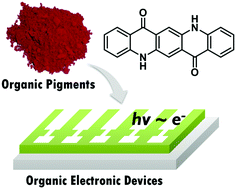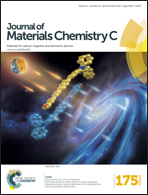Quinacridone-based π-conjugated electronic materials
Abstract
Organic electronic materials are a hot topic of both academic and industrial studies because of their wide range of applications in various fields, e.g. displays, lighting and solar cells. In the development process of electronic materials, quinacridone (QA) and its derivatives have attracted increasing attention due to their intriguing properties, such as intense fluorescence in the dispersed state, strong absorption in the visible-light region, good carrier-transporting properties, as well as high photo, thermal and electrochemical stability. To date, the applications of QAs as electronic materials have been extensively explored in organic light-emitting diodes (OLEDs), organic solar cells (OSCs) and organic field-effect transistors (OFETs). The continuously improved performance of the QA-based electronic devices enables QAs to be used as an important material system. To summarize the achievements and drawbacks of this class of electronic materials so as to promote their further development, we review the existing knowledge on the synthesis, device performance and structure–performance relationships of QA-based electronic materials.


 Please wait while we load your content...
Please wait while we load your content...